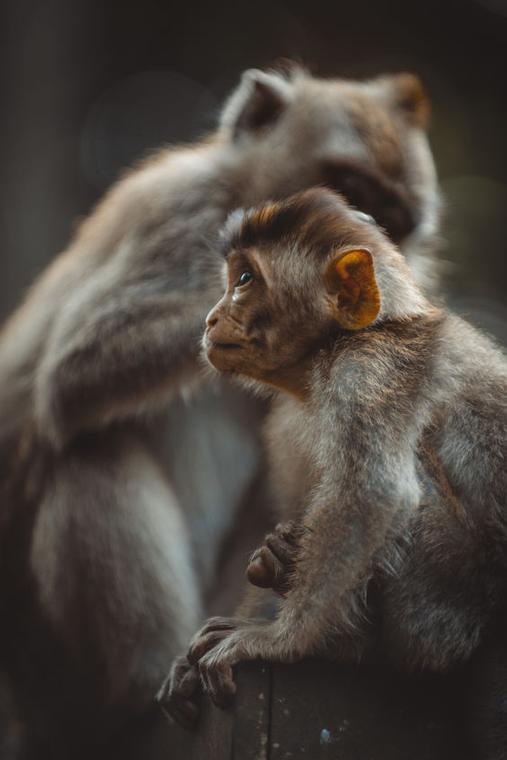- Sections :
- Crime & Public Safety
- Restaurants & Food
- Sports
- More
Categories
The brains of humans and monkeys shed new light on the study of language

THE WOODLANDS, TX -- According to brand new studies by Harvard, University of California- Berkeley, and Carnegie Mellon, the minds of humans and primates share certain distinct traits and abilities, that go beyond what scientists believed before. In multiple studies conducted on 100 participants, varying in age, species, and culture, researchers among the university, found that certain groups of indigenous people in the Amazon Rainforest, American adults and preschoolers, and Macaque monkeys show, to some extent, the knack for recursion, which is a process of cognition that arranges and organizes phrases to convey information.
The findings shed new light on linguistics, researchers say.
“For the first time, we have strong empirical evidence about patterns of thinking that come naturally to probably all humans and, to a lesser extent, non-human primates,” says Steven Piantadosi, one of the study conductors.
Known in linguistics as “nested structures,” recursive phrases within information are crucial to the syntax and semantics in human language. Researchers tested the recursive skills of 10 U.S adults, 50 preschoolers and kindergarteners, 37 indigenous people from the Amazon, and 3 male Macaque monkeys. First, all participants were trained to memorize different sequences in distinct orders.
Participants from the United States and monkeys used a large tablet to memorize the sequences. They heard a ding sound if they got a piece of the sequence right, a buzzer if they got something wrong, and a chiming sound if they got the whole pattern correctly. Meanwhile, the indigenous people, who aren’t acquainted with technology, used index cards and were given verbal confirmation. Next, the 4 groups were asked to arrange 4 images shown in random order into a sequence on the screen.
To different degrees, the participants arranged their new lists in a recursive order, which is remarkable given that, “Indigenous adults, U.S preschoolers, and monkeys, who lack reading and mathematical training had never been exposed to such stimuli before,” the study noted.
“These results are convergent with recent findings that monkeys can learn other kinds of structures found in human grammar,” Piantadosi said.
In conclusion, this study shows the next step in our study of not only neurolinguistics, but an addition to our understanding of evolution and connection to other species and people around the world
The study’s leader is Jessica Cantlon at Carnegie Mellon University in Pittsburg, Pennsylvania.
Materials provided by University of California- Berkeley.
We may not speak the same language, but the way our minds work are more similar than previously thought.
The findings shed new light on linguistics, researchers say.
“For the first time, we have strong empirical evidence about patterns of thinking that come naturally to probably all humans and, to a lesser extent, non-human primates,” says Steven Piantadosi, one of the study conductors.
Known in linguistics as “nested structures,” recursive phrases within information are crucial to the syntax and semantics in human language. Researchers tested the recursive skills of 10 U.S adults, 50 preschoolers and kindergarteners, 37 indigenous people from the Amazon, and 3 male Macaque monkeys. First, all participants were trained to memorize different sequences in distinct orders.
Participants from the United States and monkeys used a large tablet to memorize the sequences. They heard a ding sound if they got a piece of the sequence right, a buzzer if they got something wrong, and a chiming sound if they got the whole pattern correctly. Meanwhile, the indigenous people, who aren’t acquainted with technology, used index cards and were given verbal confirmation. Next, the 4 groups were asked to arrange 4 images shown in random order into a sequence on the screen.
To different degrees, the participants arranged their new lists in a recursive order, which is remarkable given that, “Indigenous adults, U.S preschoolers, and monkeys, who lack reading and mathematical training had never been exposed to such stimuli before,” the study noted.
“These results are convergent with recent findings that monkeys can learn other kinds of structures found in human grammar,” Piantadosi said.
In conclusion, this study shows the next step in our study of not only neurolinguistics, but an addition to our understanding of evolution and connection to other species and people around the world
The study’s leader is Jessica Cantlon at Carnegie Mellon University in Pittsburg, Pennsylvania.
Materials provided by University of California- Berkeley.
Comments •

















